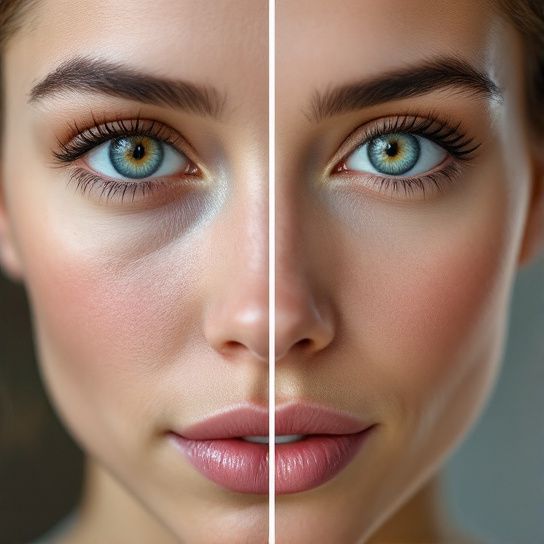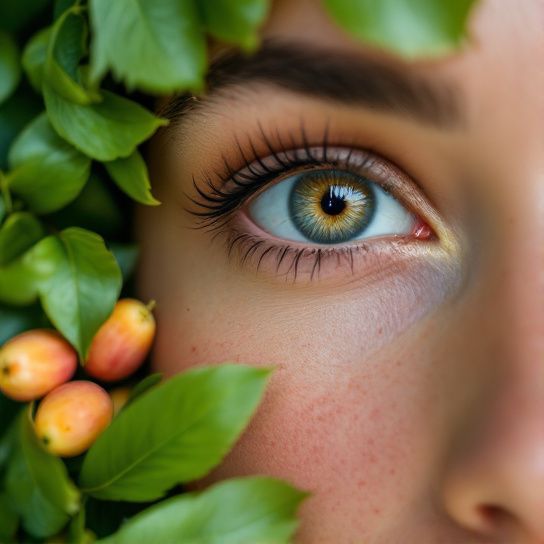Hey there, weary eye-rubbers and overworked screen-straights! Ever found yourself staring at your reflection and wondering why those pesky dark circles won’t fade away despite sleeping a whole eight hours? Trust me, you’re not alone. Dark circles under the eyes can be as stubborn as your morning alarm, refusing to budge no matter how much rest you think you’re getting.
Let’s chat about how we can target this specific area with practical anti-aging treatments. Spoiler: it’s gonna involve a bit of science, a dash of lifestyle change, and some skincare savviness. Let’s dive straight in.
Why Do We Get Dark Circles?
Before we start fixing the problem, let’s talk about why it even exists in the first place. It’s like trying to dunk a biscuit in your tea without understanding why it keeps breaking. Annoying, right?
So, What Causes Dark Circles?
Dark circles can stem from so many places:
- Genetic Factors: Sometimes it’s all about your genes. If your parents sported that shadowy nuisance, you might just have inherited the same deal.
- Lack of Sleep: Sure, this one’s obvious, but it’s like a bad haircut—it never goes unnoticed. Not getting enough Zzzs can lead to paler skin, which in turn makes those circles pop.
- Age: As we get older, our skin gets thinner, and blood vessels become more visible, leading to a darker appearance around the eyes.
- Allergies: Rubbing itchy eyes can break capillaries under the skin leading to–you got it–darker circles.
- 5. **Lifestyle Factors: Think sun exposure, smoking, and an unhealthy diet. Our skin is pretty vocal when it comes to our overall health.
Now, let’s circle back (no pun intended) to how we tackle this.

Forming a Targeted Treatment: Get Ready to Fight Back
Alright, let’s get down to business. Developing an t labeled “anti-agi for dark circles is not just about buying every product labeled “anti-aging” (though if you’ve gone on a Sephora spree, I won’t judge). It’s about a targeted approach that goes skin-deep.
Step 1: Address Your Lifestyle
Sometimes the answers are right there, sipping a smoothie on Instagram. Here’s where lifestyle tweaks come in.
- Hydration: We can’t ignore this. Dehydration causes the skin to appear dull, meaning those circles show up like an unwelcome house guest. Water not only hydrates but flushes out toxins that can contribute to that dark silhouette.
- Adequate Sleep: Consistent sleep is crucial. Try getting into a routine—wake up at the same time, go to bed at the same time. Even on weekends. I know, I know, but it’s worth it.
- Diet and Nutrition: Your diet should include plenty of fruits and veggies, especially those high in vitamins K and C. They help strengthen your blood vessels and skin.
- Cut the Bad Habits: Limit alcohol and quit smoking. I know, easier said than done, but each step counts.
Step 2: Eye Creams and Serums
Did you know the skin around your eyes is the thinnest on your body? It’s basically screaming for help. Enter skincare: eye creams and serums can work wonders if chosen wisely.

- Caffeine-Based Products: Trust me on this one. Caffeine shrinks blood vessels and reduces puffiness. Makes that morning cup of joe seem even more delightful, doesn’t it?
- Retinoids and Peptides: These help with cell turnover and boost collagen production. Just remember, with great power (like retinoids) comes great responsibility—use sparingly for those with sensitive skin.
- Vitamin C and E: Antioxidants can help brighten skin by reducing pigmentation. It’s like a slice of fresh orange juice for your eyes.
I hear you asking, “But which product should I use?” Find ones specifically formulated for your particular skin type. Your oily-skinned friend might swear by her eye cream, but it might not be what your dry skin needs.
Step 3: Cover, if You Must
Sometimes we all need a quick fix. Concealers can be a temporary solution.
- Choosing the Right Concealer: A slightly warmer or peach-toned concealer can negate the blue tones under your eyes.
- Application Tips: Gently dabbing, rather than dragging it on, works best. And a little goes a long way.
Step 4: Expert Treatments: When DIY Just Isn’t Cutting It
When you’ve tried everything and those circles are still more persistent than your never-ending laundry pile, it’s time to consider professional treatments.
- Chemical Peels: These can target hyperpigmentation but remember they should be done under professional guidance.
- Laser Therapy: For some, laser treatment helps in reducing darkness and promotes collagen production. It’s not for everyone, and it can be expensive, but it’s worth discussing with a dermatologist.
- Dermal Fillers: If volume loss is the culprit, filling it up can be a swift solution. Again, consult an expert. It’s your face, after all.
Here and There: Touching Back

Remember, while it’s tempting to focus solely on the eye area, don’t forget your overall skin health. Sometimes those pesky dark circles are just silent reminders of what’s going on as an all-over picture. Keep on checking back with your routines, don’t be afraid to switch things up if something isn’t working, and carry on being a little mindful about sun exposure because yeah, it never stops being important.
Consistency Is Key
Your skin loves consistency—not to sound like a Rihanna song, but maintaining a routine is a surefire way towards improvement. Don’t give up if you don’t see results overnight. The years didn’t deliver those circles in a single day, did they?
Common Pitfalls to Sidestep
- Overusing Products: This can lead to skin irritation. Patience is a virtue, and with any new product, slowly introducing it to your skin is always the play.
- Skipping Sunscreen: Listen carefully: this is non-negotiable. UV rays don’t play fair with any part of your skin, including around your eyes.
- Ignoring the Power of Basics: Sometimes going back to basics does the trick. Cleanse, eat your greens, cover a bit, and you’re often much further along than you think.
Wrapping It Up
Alright, there you have it—a juggle of self-care, slight vanity, science, and a sprinkle of keeping it real. Dark circles don’t stand a chance with your new targeted anti-aging strategy. Whether it’s those DIY moments, the glimmer of newfound skincare loves, or the moment you schedule that derm appointment—go at it with all the info right up there with you.
Now, are you ready to say goodbye to those under-eye shadows? It’s time to bring out that refreshed look you know you’ve got hiding beneath. Awaken those eyes, and let your face tell the world exactly who’s got it all together. Well, at least most of the time.
Frequently Asked Questions
What causes dark circles under the eyes?
Dark circles under the eyes can be caused by several factors, including allergies, sinus disease, lack of sleep, thyroid problems, volume loss, cigarette, alcohol, and salt intake, and stress. Allergies can lead to swelling and darkening of the skin under the eyes, while sinus disease can cause pressure and fluid retention. Lack of sleep can dilate blood vessels, making them more visible. Thyroid issues can lead to swelling and skin discoloration. Volume loss, smoking, alcohol consumption, and high salt intake can also contribute to the appearance of dark circles[1][3][5).
How can I reduce the appearance of dark circles under my eyes?
To reduce the appearance of dark circles, you can try several home remedies and lifestyle changes. Using cold compresses or cold packs can help shrink blood vessels. Raising your head with pillows while sleeping can prevent fluid pooling. Getting adequate sleep, using sunscreen, avoiding excessive alcohol and smoking, and treating underlying medical conditions can also help. Additionally, using products containing ingredients like kojic acid, caffeine, and vitamin K may be beneficial[3][5).
Are dark circles under the eyes a sign of an underlying medical condition?
While dark circles are often not a cause for medical concern, they can sometimes be a sign of an underlying condition. These include allergies, sinus disease, thyroid problems, anemia, and skin conditions like eczema or melasma. If the dark circles are severe, worsening, or accompanied by other symptoms, it is advisable to consult a healthcare professional[1][3][5).
Can dark circles under the eyes be permanent?
Dark circles under the eyes may not always be permanent. Their duration can depend on various factors such as lifestyle, genetics, and nutritional deficiencies. While some dark circles may be a part of aging and not typically a cause for alarm, others can be managed or treated with appropriate remedies and medical interventions[3][5).
References


